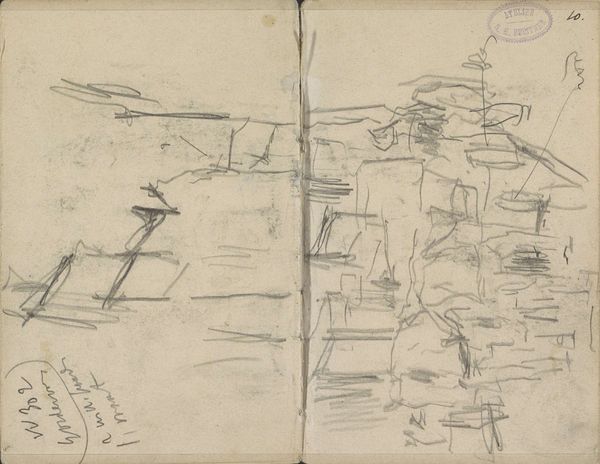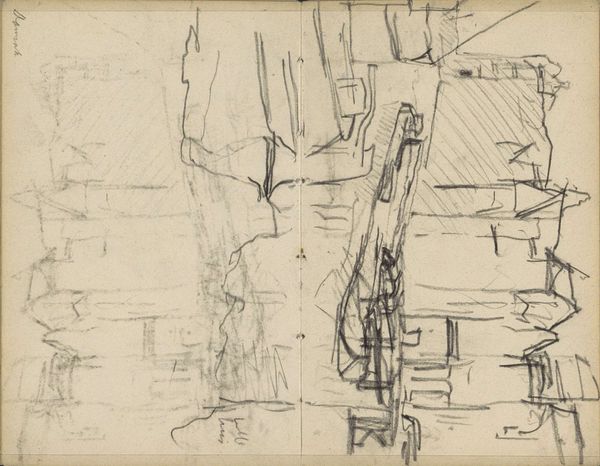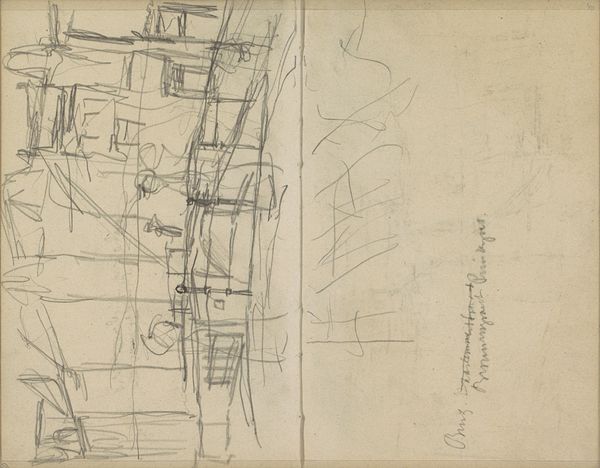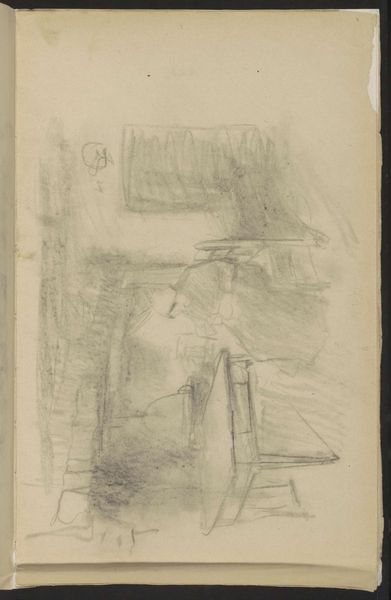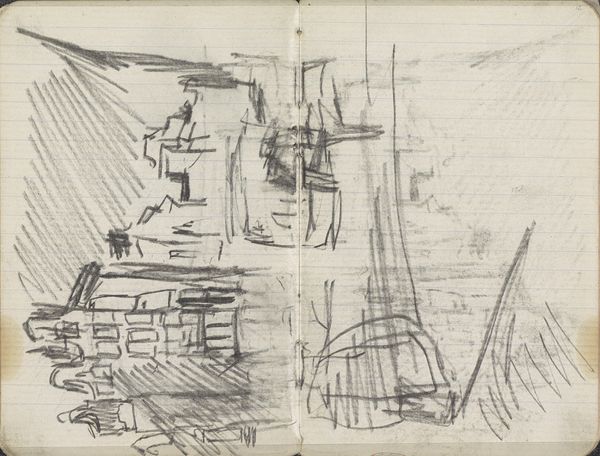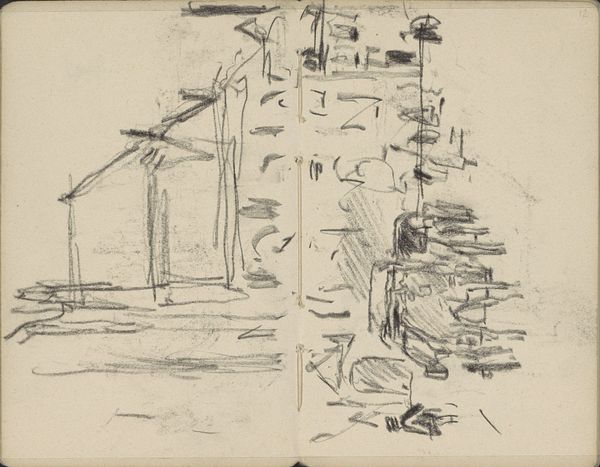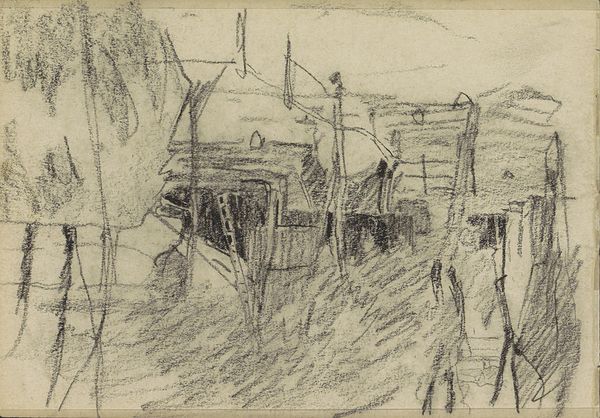
Gezicht op de Keizersgracht te Amsterdam ter hoogte van de Reestraat c. 1894
0:00
0:00
georgehendrikbreitner
Rijksmuseum
Copyright: Rijks Museum: Open Domain
Curator: Here we have a quick study, dating from around 1894, by George Hendrik Breitner. It's titled *Gezicht op de Keizersgracht te Amsterdam ter hoogte van de Reestraat* - or, "View of the Keizersgracht in Amsterdam near the Reestraat." It's rendered in pencil and ink on paper, offering a fleeting glimpse of city life. Editor: Fleeting indeed! It feels almost like a suppressed memory, a quick grab at an impression. There's something unsettling about the hasty, scratchy lines… like a ghost city peering through. Curator: That's perceptive. It wasn't meant for show. This is pure process, direct from his sketchbook. You can see the rapid strokes, the artist capturing the essence of the scene more than precise details. Breitner was very much invested in depicting the immediacy of urban life. Editor: And I see it as more than that; it's about labor. Look at those heavy lines suggesting support beams, probably for the docks or construction. What materials would Breitner, the urban observer, have been exposed to? The smells of rope, tar, wood, maybe the acidic tang of metal being worked? Curator: Definitely. Breitner was fascinated by work, the daily grind, and the grit of Amsterdam, though I find that his talent with impressionistic representation doesn't always mix with grit! Note the composition though; see how he plays with perspective, leading your eye into the depths of the canal. And consider the scale - this intimate view captured in a personal sketchbook gives such a direct line to Breitner's thinking and looking at the world. Editor: I'm struck, too, by the tension between what's included and omitted. Breitner chooses what to render from the scene—how many of these supports will go into the making of new architecture? This incomplete aspect of the sketch reflects how the built environment around him was equally under construction, undergoing transformation, constantly on the move. Curator: That’s so true. Breitner provides no closure. The lines dissolve; reality diffuses, which is why, to me, these are not simply urban scenes; they are explorations into our perception of modernity. Editor: It makes you ponder the labor that goes into even our quickest perceptions! Thanks for that thoughtful analysis. Curator: Indeed. Thanks for diving into this brief, captivating look into Breitner's world with me.
Comments
No comments
Be the first to comment and join the conversation on the ultimate creative platform.
